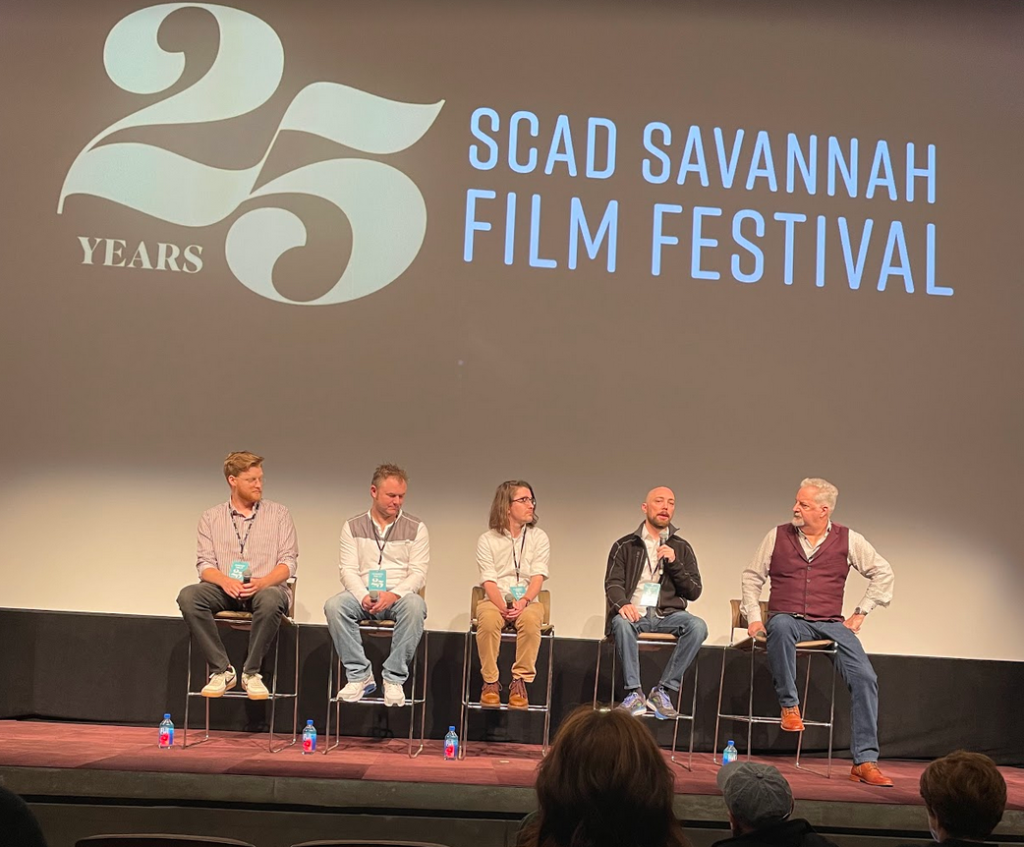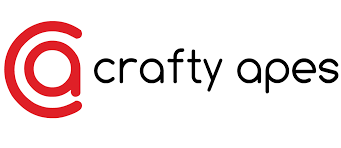Crafty Apes and Creating VFX for Georgia-Filmed Productions
As Georgia continues to soar in the film and TV industry, the demand for post-production is booming in the state. Visual effects experts from leading company Crafty Apes discussed some of the year’s most anticipated projects filmed in Georgia, including “Till”, “The Menu”, and “Do Revenge,” which were streamed at the 25th SCAD Savannah Film Festival.

Andrew Prescott(visual effects producer), Bobby Tucker(visual effects producer), Marc Smith(visual effects supervisor), and Tanner Bartlett(compositing supervisor) were all at the panel on Thursday, talking with Gray Marshall, the Chair of Visual Effects at SCAD. Detailed below is the conversation that they had during this event.
So, we’d like to talk about your work on Georgia productions today, particularly Till and The Menu, among others. But firstly, can each of you give us a little history of your personal background and how you came to visual effects? So how did you get into visual effects, and how did you come to Georgia?
Andrew Prescott:
After about eight years in the Marine Corps, I decided that was not what I wanted to do with my life. I wanted to go into a different, more creative direction and went back to school late in my 20s and basically met the best people there. I started networking immediately and drove from graduation, essentially to Louisiana, because, at that time, there was a heavy patch that worked on a movie called The Maze Runner.
And then that networking turned into me moving to Atlanta for another week on a little movie called The Hunger Games. And I’m here today. I’ve been in Atlanta, and I have since traveled outside of that for jobs all over the world, such as in Africa, but I always come back here. It has been strong and steady.
Bobby Tucker:
I have probably the least direct path to getting to visual effects; I didn’t start doing this from the beginning at all. I actually was an English major for 5 years. I just happened to know some cool people in Atlanta. I started from the very bottom. I was doing file transfers, then coordinating, and then producing. And then I ended up here.
Marc Smith:
I started off with a multimedia technology degree in Leeds, England. So the first opportunity after I went to live in Los Angeles two or three times over about a year and a half. I worked at Digital Domain, did a lot of concept work, and traveled as well. I visited and lived in China, Australia, New Zealand, and practically all through Canada. I went to New Zealand for six months but ended up spending eight and a half years there. I worked on some huge projects, like Avengers Endgame and more. And then, my family and I decided we wanted to move out of New Zealand. So we moved out to Montreal, where I was a CG Supervisor in Montreal at the end for two and a half years at DNEG. I got a call from Chris asking me to work at Crafty Apes, and I said yes.
Tanner Bartlett:
I went to art school in Orlando, Florida; I studied visual effects. And I moved back home for a little bit. I worked as a Production Assistant, then I went back to doing Technical Assistant jobs. I had an interview for a company in Atlanta, and about a year later, I moved there. They taught me how to take charge on an Adult Swim TV show, and that’s where I met Steve. And I’ve been at Crafty Apes for seven years now.
So let’s get into the meat of the subject, what is going on in Georgia? What is this about? Why is this such an interesting place to be doing this work?
It’s mostly money, and the Georgia tax incentive is adaptable. Also, we are great geographically. We have beaches, cities, towns, etc. We have a lot of coverage. In the old days, we used to shoot scenes in Mexico because of the nicer weather. But now, they do all that year here in Georgia. The seasons and weather here are beautiful, with an average of 75 degrees, and sunny all the time. Also, as we continue to make films here, it’s not like we could go back to 2014 when we were building infrastructure, and that’s huge. For example, near Peachtree City, there are several studios that have been popping up in the heartland for decades. People want to come here because the studios are here, and in turn, the studios want to go here because the people are all here. The Delta hub is in Atlanta, which makes it easy to get several people in and out of here via plane. It’s also great because we are centrally located as far as the big city hub, and then we can branch out to the smaller cities that have basically all films are looking to offer for a backdrop and setting they want to tell their story.
What are you finding unique about working on the Georgia productions versus other ones, or is it just another day in the office?
The infrastructure is growing. You have the expertise and the crew availability, and everybody’s so centrally based in Atlanta. Everyone’s so proud to work in Georgia and have a shoot here and grow, so I think that brings a different level to working somewhere else where we’re all trying to build something and be a part of that.
How are you finding your new talent acquisition in Atlanta versus in more populated areas? Are you bringing talent from outside primarily, or are you finding new talent readily available here?
It’s more like 50/50. It’s definitely easier to hire people here because of the tax incentive. And it’s easier to get in contact with people who are in the same time zone or area as everyone else is. You kind of have to move around where the work is. When I spoke to Chris and John from Crafty Apes, they said it’s really growing here. People don’t really refuse to move to a huge studio. You’re not going to get all the time to one area, but it seems that people rotate, and I certainly needed a bit of convincing to move my family again. You need to trust people you can talk to in your market and knows that people are making your first connection. Chances are you want to get the best out of all the studios.
What was involved in the work on “The Menu”?
There were 350 visual effects shots. And the fact is that if you don’t see them, that’s the point; you’re not supposed to see visual effects. If you can see certain visual effects, then that means we haven’t done a good job. A lot of the work on The menu was everything through windows on blue screens. It was a lot of blue screening. There were some big CG elements in there that we had to get right. It was kind of a lot of work. In the end, we’ve got the shot of the chef on fire, and the chef is in the kitchen, and the house is on fire too.
Often times it can be a bit difficult when the director articulates exactly what he wants. Sometimes what you make doesn’t feel right. And so you have to be able to get very specific on how you want to look, so we had very good advice to go forward. With the chef-being-on-fire shot, we had to do tracking and a match. And sometimes, the character has lights where you don’t want them to be or where it doesn’t look right with the CG fire. So we had a few issues getting the fire right.
Talk a little bit about “Till”.
Let’s talk about that historically factual drama. I think it’s very important that visual effects people be involved in the story and be cognizant of the story they’re contributing to, even if they’re just doing minor shots. Just the overall value I felt in being able to help tell that story was amazing, as far as bringing that to the screen. It was very important for our whole team to maintain what we call the suspension of disbelief. I don’t know if you guys talk about that a lot. But we want to take you out of what’s happening in the real world. We want you to be there with them experiencing that and feel like you were there when this was actually happening. If you can tell there are some visual effects, then we’re taking you out of the story, right? We don’t want you to see these. So creating the train stations and thriving places from the 1950s, things like that, Visual effects are there off in the background and help tell that story supplement.
The guests from Crafty Apes were very passionate people that enjoyed what they did for a living. They also talked about how working at Crafty Apes is amazing because it’s like a family, and they all help one another out. You can watch their work in the upcoming movies that are coming out: The Menu and Till.
